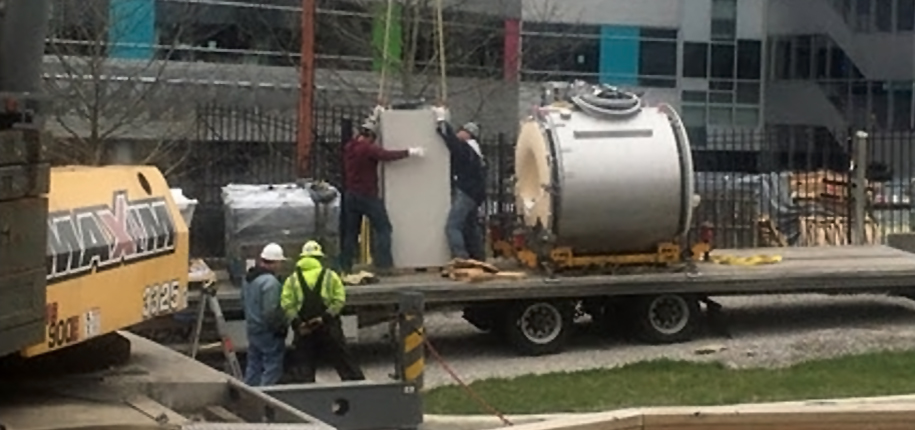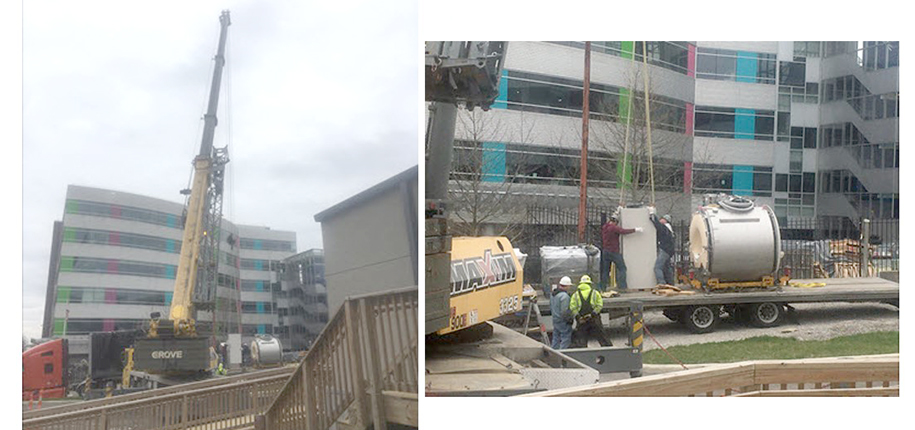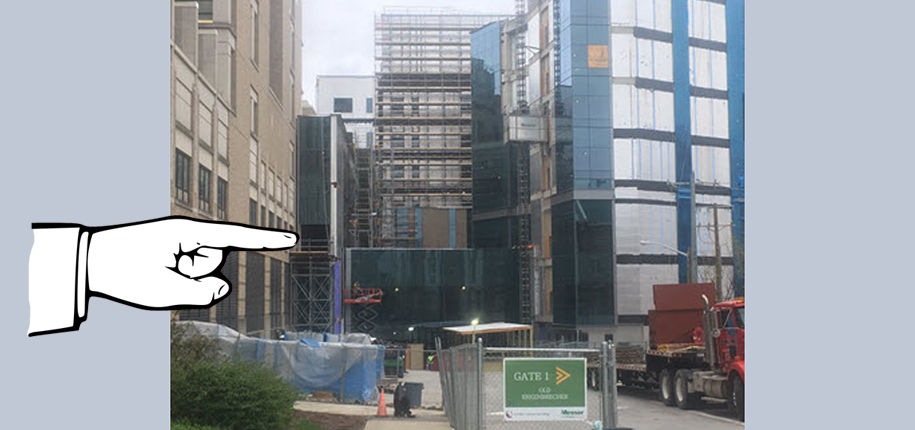
Although most of our attentions are currently transfixed on the COVID-19 situation, here in Radiology’s MRI Division, we know there are at least a couple of teams having to focus their attention elsewhere. At this moment, the Philips and Messer teams in the MRI Division are concentrating on moving a 1.5T Philips scanner from our modular unit to the main MRI location.
If you can recall from about a year ago, we were utilizing the modular unit to house two MRI scanners while major construction for the new Critical Care Tower occurred on the exterior walls of the MRI Division. Since then, the major construction has been completed and function has returned to the main MRI area, so we no longer have use for the modular unit. Once the modular unit was not needed, the next steps in the plan were to move the scanners into the main MRI area to replace two of our older machines.

The machine, which was located in M1, has already been replaced by one of the modular unit scanners. Now it is time to retrieve the last remaining modular unit scanner. As you can imagine, the adding of an entire Critical Care Tower to the outside of our department has created a few new challenges. Before the new building existed, the crane, which is used to move the scanners, would park on the street and lift the magnet through a temporary hole created in the ceiling. In our current situation there is no street to park the crane on because of the Critical Care Tower. Luckily for us, the Cincinnati Children’s building designers gave us a loophole. Along the backside of the MRI department there is a special hallway to allow the Philips engineers to move the magnets in and out when being replaced. A crane is still used to lift the scanner, but instead of lowering it through the roof, it is delivered to that special hallway and rolled into place.

This process can take a few weeks to complete the construction and relocation of the MRI scanner. Once the machine has been successfully removed, then the modular unit will be deconstructed in time. Our ultimate goal is to get the Cincinnati Children’s MRI Division back to its original locations, with two new scanners, by the end of April 2020.
Tony Dandino, author; Glenn Miñano, BFA, editor; Meredith Towbin, copyeditor. Photos contributed by Dr. Brian Coley.